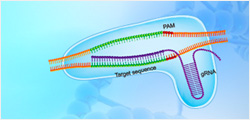TLR3[Biotin], His & Avi, Human
TLR3 is expressed in the central nervous system (CNS), where it is required to control HSV-1, which spreads from the epithelium to the CNS via cranial nerves. TLR3 is also expressed in epithelial and dendritic cells, which apparently use TLR3-independent pathways to prevent further dissemination of HSV-1 and to provide resistance to other pathogens in TLR3-deficient patients. Human TLR3 appears to be redundant in host defense to most microbes but is vital for natural immunity to HSV-1 in the CNS, which suggests that neurotropic viruses have contributed to the evolutionary maintenance of TLR3.
| ¥5800 | |
| Z04624-100 | |
|
|
|
|
|
|
|
|
|



































